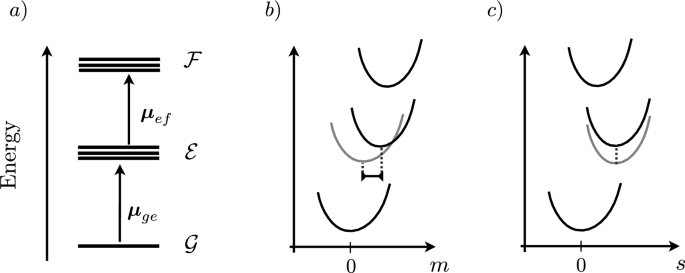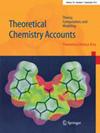来自量子动力学的光谱学:混合波函数/分析线形函数方法
IF 1.5
4区 化学
Q4 CHEMISTRY, PHYSICAL
引用次数: 0
摘要
量子动力学是精确模拟非绝热耦合分子系统光谱的自然框架。即使已经开发了有效的量子动力学方法,在现实系统中需要考虑的自由度数量通常太高,无法明确地解释所有的自由度。此外,在开放量子系统中,需要包含低频环境模式的准连续体以获得对光谱带的适当描述。在这里,我们描述了一种方法来解释大量模式,基于它们分为两组:一组在量子动力学中明确处理的动态相关模式(所谓的主动模式),以及一组仅与光谱相关的模式(所谓的旁观者模式),通过分析线形函数处理。对一个现实模型系统的线性和非线性光谱进行了仿真,提供了一个清晰的框架和适用范围,使所引入的方法是精确的,并评估了当这种划分只是近似时引入的误差。本文章由计算机程序翻译,如有差异,请以英文原文为准。

Spectroscopy from quantum dynamics: a mixed wave function/analytical line shape functions approach
Abstract Quantum dynamics is the natural framework in which accurate simulation of spectroscopy of nonadiabatically coupled molecular systems can be obtained. Even if efficient quantum dynamics approaches have been developed, the number of degrees of freedom that need to be considered in realistic systems is typically too high to explicitly account for all of them. Moreover, in open-quantum systems, a quasi-continuum of low-frequency environment modes need to be included to get a proper description of the spectral bands. Here, we describe an approach to account for a large number of modes, based on their partitioning into two sets: a set of dynamically relevant modes (so-called active modes) that are treated explicitly in quantum dynamics, and a set of modes that are only spectroscopically relevant (so-called spectator modes), treated via analytical line shape functions. Linear and nonlinear spectroscopy for a realistic model system is simulated, providing a clear framework and domain of applicability in which the introduced approach is exact, and assessing the error introduced when such a partitioning is only approximate.
求助全文
通过发布文献求助,成功后即可免费获取论文全文。
去求助
来源期刊

Theoretical Chemistry Accounts
化学-物理化学
CiteScore
3.40
自引率
0.00%
发文量
74
审稿时长
3.8 months
期刊介绍:
TCA publishes papers in all fields of theoretical chemistry, computational chemistry, and modeling. Fundamental studies as well as applications are included in the scope. In many cases, theorists and computational chemists have special concerns which reach either across the vertical borders of the special disciplines in chemistry or else across the horizontal borders of structure, spectra, synthesis, and dynamics. TCA is especially interested in papers that impact upon multiple chemical disciplines.
 求助内容:
求助内容: 应助结果提醒方式:
应助结果提醒方式:


